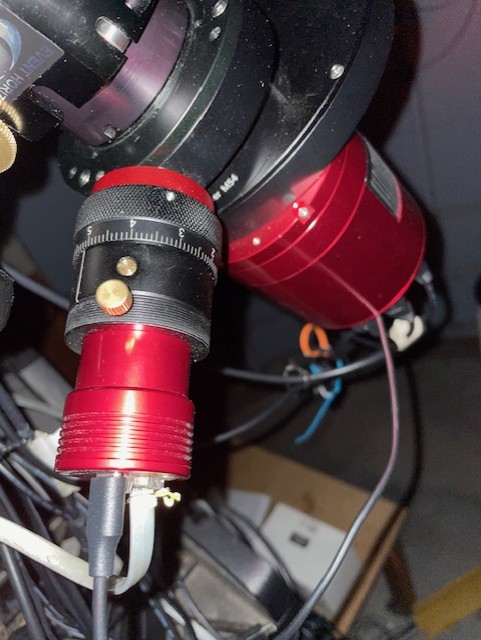
On the night of Sep 20/21, 2025, under good-to-poor conditions, I acquired images of the recurrent nova T CrB. This star undergoes outbursts at long intervals of 80 years or so. Its next outburst is predicted to occur soon (but then again, it was also predicted to occur during 2024), and so I've joined the crowd who are monitoring it.
I was able to take images with the new guide camera -- hooray! I wasn't able to cause it to send corrections to the telescope -- boo!
Note added Sep 23, 2025: Success in sending correcting
motions to the telescope. I had to install a driver for the
Keyspan USA-19HS serial-to-USB adapter. After doing so,
I used the device manager to identify it as port COM7.
In MaximDL, I then set the "Guider Settings" to
I still need to calibrate the new guider, setting the X-speed, Y-speed, and Angle to appropriate values.
The star remains quiescent.
This recurrent nova brightens by about 8 magnitudes (!), from V = 10 to about V = 2, around every 80 years. Will we see another outburst THIS summer?
These observations involved:
Notes from the night:

The picture below shows a cropped image of the field of T CrB from Jun 14/15, 2024. The field of view is about 20 arcminutes across.
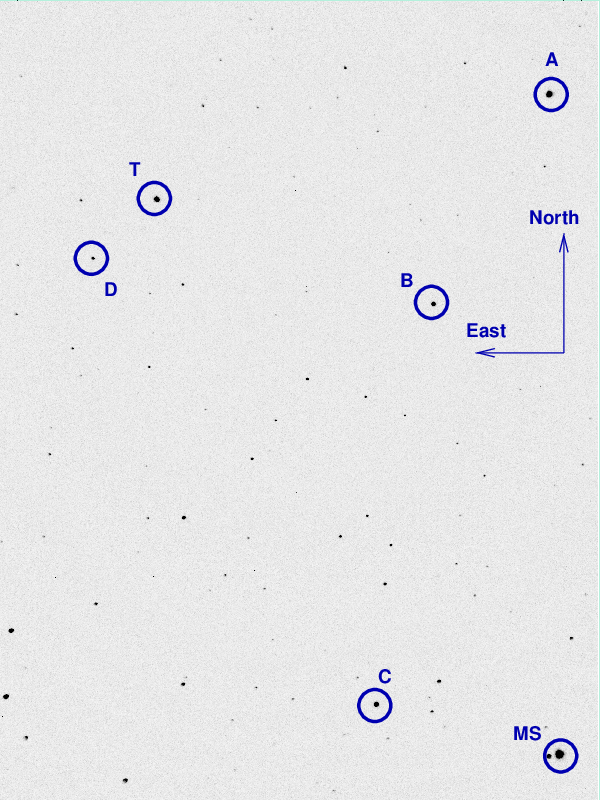
I've marked the location of several comparison stars, with magnitudes and names taken from the AAVSO's table X40237AAS. Note that the magnitudes listed for stars "A" and "B" have changed from the ones I listed in last year's notes.
star name B V
------------------------------------------------------
A 000-BJS-901 11.096 10.554
B 000-BBW-805 11.779 11.166
C 000-BPC-198 13.049 12.336
--------------------------------------------------------------------------
When the target is centered, the finder TV shows this field:
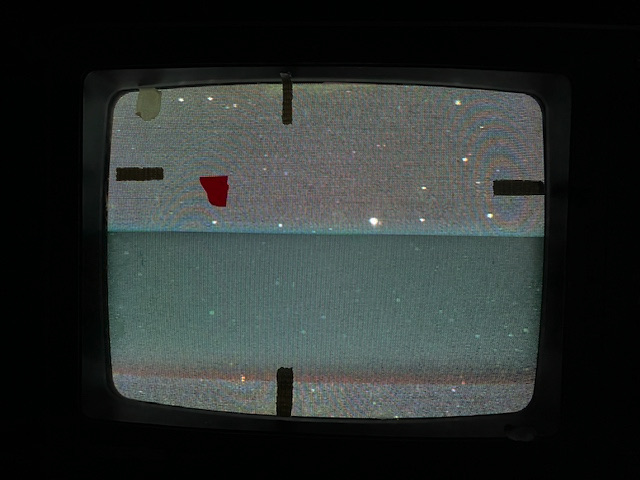
Here's the sky background over the course of the run. Note clouds in the second half of the run.
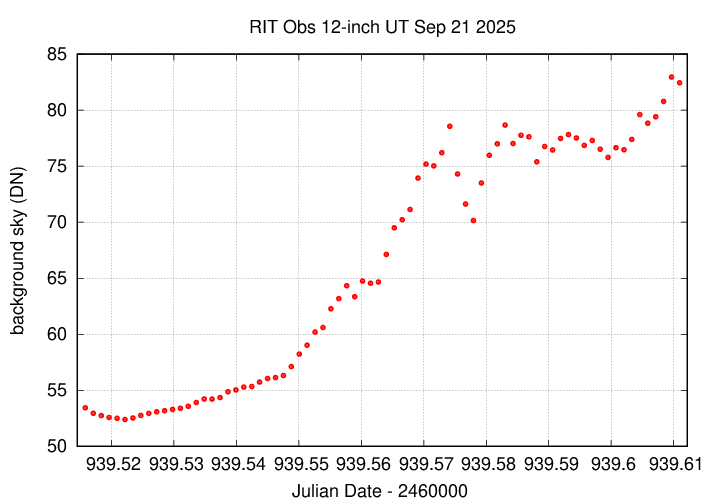
The FWHM was pretty steady, but had a large scatter due to the lack of guiding.
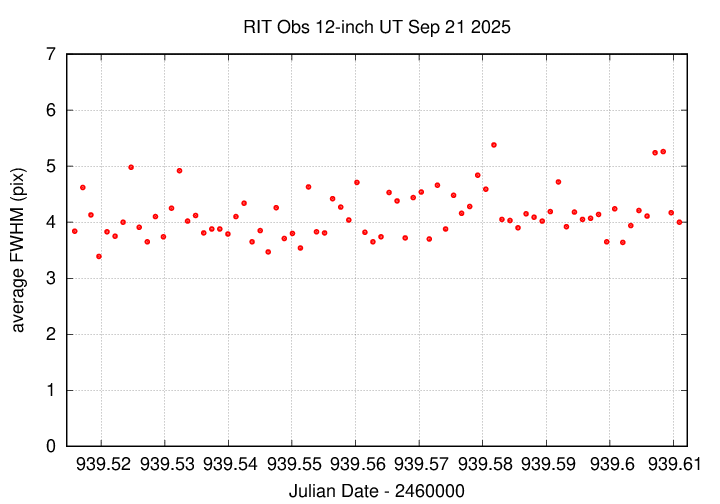
The graph below shows changes in the photometric zeropoint of an ensemble solution of the instrumental magnitudes over the course of the run. Note the effect of the clouds.
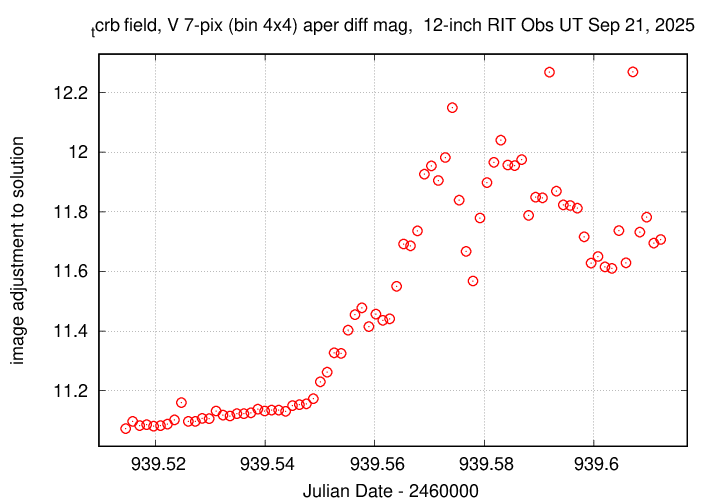
Using aperture photometry with a radius of 7 pixels in V filter (binned 4x4, each pixel is 1.036 arcsec, so a radius of 7.3 arcsec), and 7 pixels in B filter (binned 4x4, each pixel is 1.036 arcsec, so a radius of 7.3 arcsec), I measured the instrumental magnitudes of a number of reference stars and the target. Following the procedures outlined by Kent Honeycutt's article on inhomogeneous ensemble photometry, I used all stars available in each image to define a reference frame, and measured each star against this frame.
Sigma-vs-mag plots show that the floor in V-band was about 0.008 mag in V, inflated due to trailing. it was 0.009 in B.
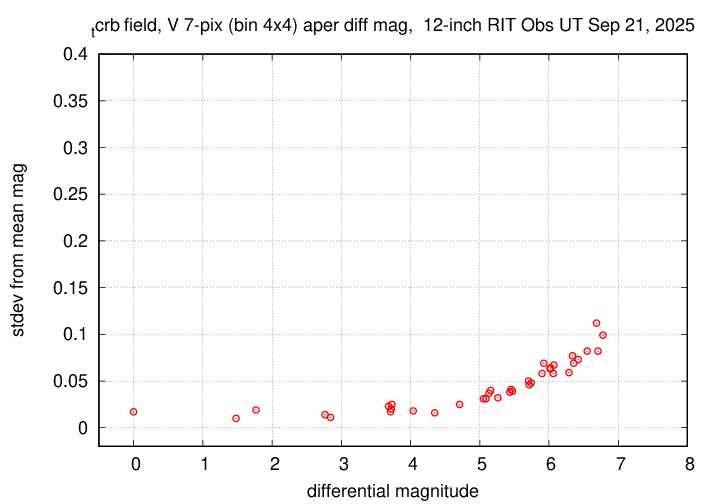
The measurements show that the target is still in quiescent phase.
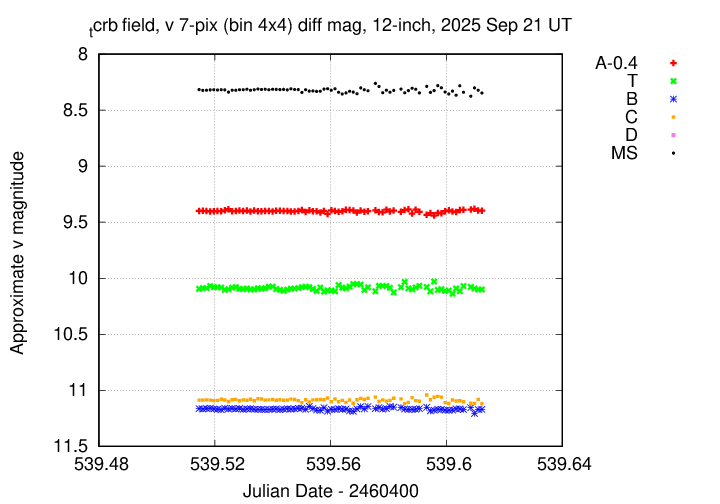
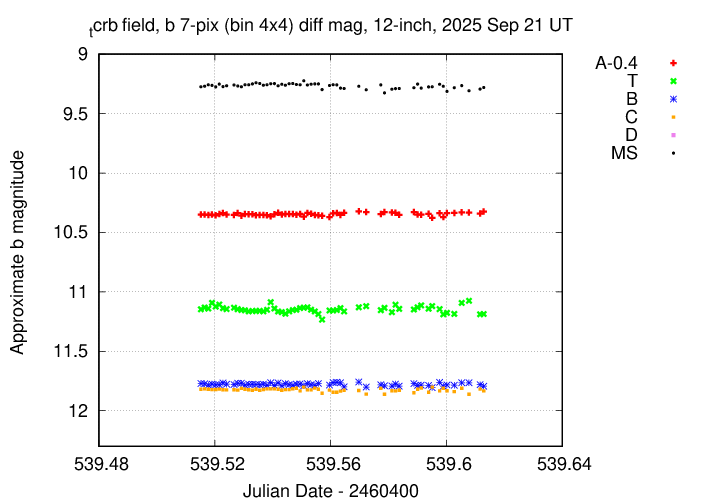
I've submitted these measurements to the AAVSO.
One of my capstone students is studying the eclipsing binary star V527 And. I acquired some images of it after T CrB reached too large an airmass. The finder telescope shows this on the TV screen when V527 And is in the main telescope's field of view. The two stars at bottom right are good markers.
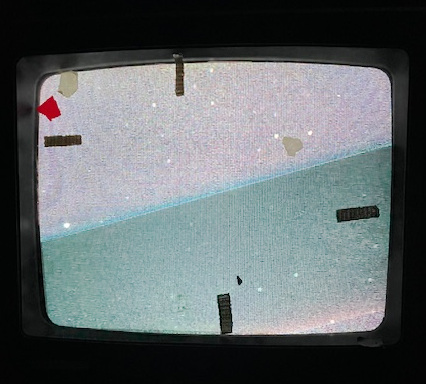
I acquired 180 pairs of B (60 sec) and V (30 sec) images, all unguided.
Start End
-------------------------------------------------------
EDT 2025 Sep 20 23:25 Sep 21 04:59
UT 2025 Sep 21 03:25 Sep 21 08:59
JD 2460939.64294 2460939.87367
-------------------------------------------------------